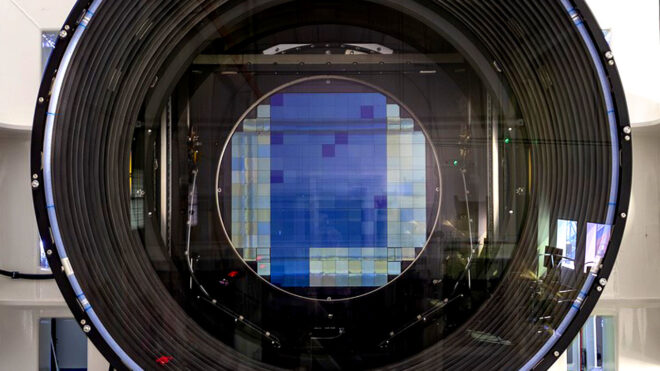Last week, the “LSST Camera”, which was described as the largest camera ever produced for astronomy, made a splash.
For those who missed it, the LSST Camera, built based at SLAC National Accelerator Laboratory, It is considered the largest digital camera ever built for astronomy. and as you can see in the video above, it looks truly incredible. According to the statement, this 3,200 megapixel camerathe Vera C. Rubin Observatory’s 10-year program in which the entire sky will be imaged every three nights.Legacy Survey of Space and Time “(LSST) is at the heart of his research. Data from the camera will help address some of the important questions in cosmology, such as the nature of dark energy and dark matter, and will facilitate the study of our solar system. being transferred. It is among the remarkable information that LSST Camera has a construction process of 20 years. What brought the camera to the agenda again were the new technical details. As reported by Dpreview At the heart of the LSST Camera are total cameras, each measuring 41 x 40mm and with a resolution of 16.4 megapixels. 189 different CCD sensors are brought together. Each of these sensors is larger and larger than the sensors in consumer-level medium format machines. A total of 634mm image recording area is obtained. Reportedly, in order to fully utilize this huge sensor, someone on the LSST was asked by Guinness World Records, “The world’s largest high-performance optical lens ever producedA three-element lens/optic is used. Full LSST Camera, which is reported to have been born after an expenditure of 168 million dollarslooks impressive from every angle and the results it produces arouse great curiosity.
YOU MAY BE INTERESTED IN
Before that, with a focus on scientific use Capable of shooting 156.3 trillion frames per second A very special camera system had been developed. Nowadays, there are many camera models that can shoot at high speed. In fact, smartphone models have been able to shoot at high speed for a while now. However, in some cases, these speeds are definitely not enough. That’s why researchers at the Canada-based Institut national de la recherche scientifique (INRS) have developed a very special camera system called SCARF (Swept-coded aperture real-time femtophotography). As we said above, with a focus on scientific use SCARF, which can shoot exactly 156.3 trillion frames per second, It allows recording of events occurring at incredibly high speeds and thus can provide scientists with different perspectives.
SCARF, highlighted as the fastest in the world, According to researchers, it is in a very special position that can benefit advances in physics, biology, chemistry, materials science, engineering and other subjects. SCARF, which currently has a single example and is a research project, will become more accessible in the future. Because it is stated that the researchers aim to commercialize the camera by working with companies called Axis Photonique and Few-Cycle. SCARF, which is reported to have a lower cost than its counterparts and can operate with lower energy needs, is built on a slightly different complex structure than old solutions.
